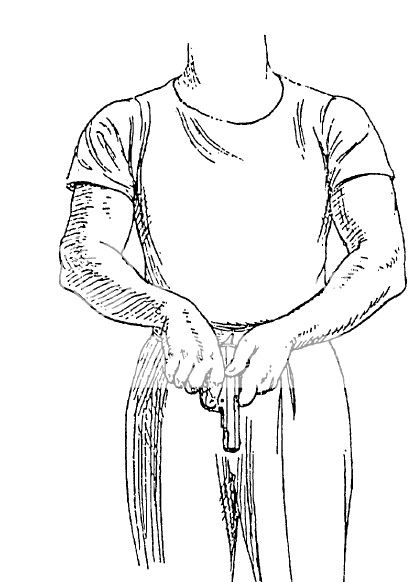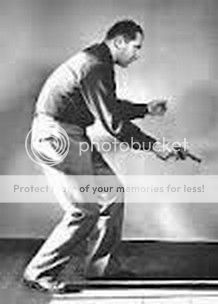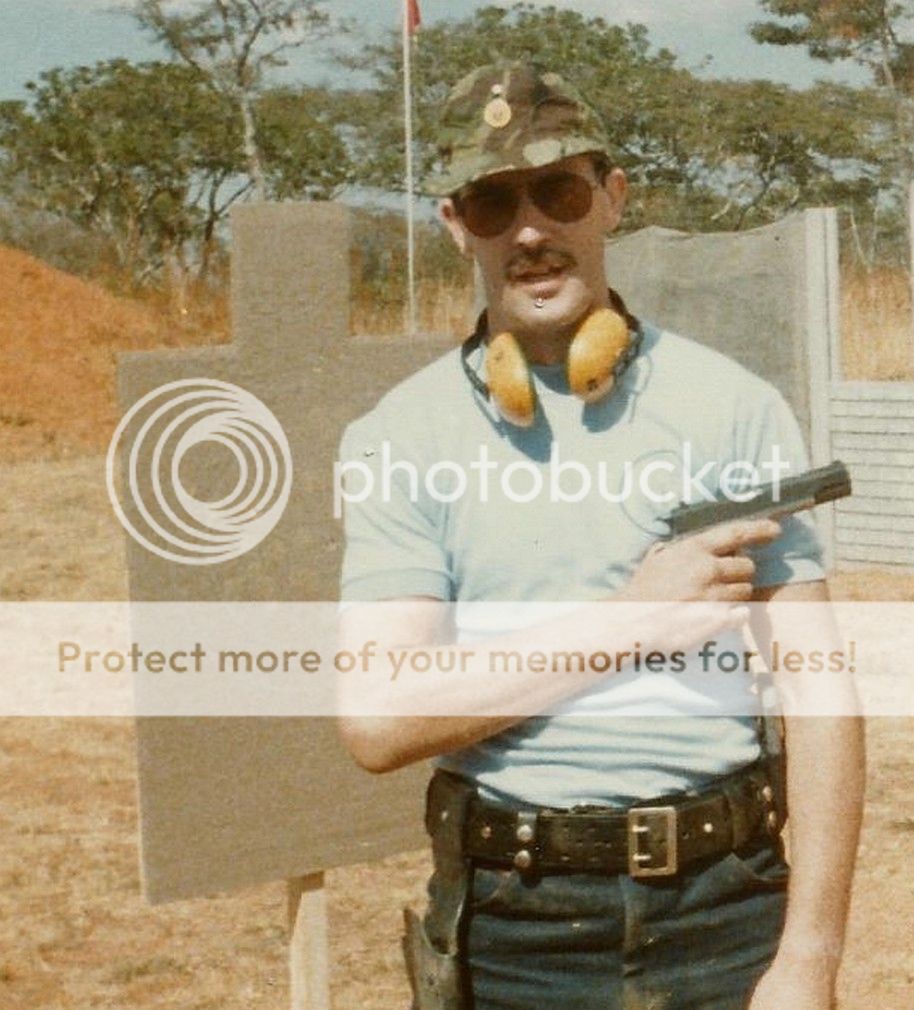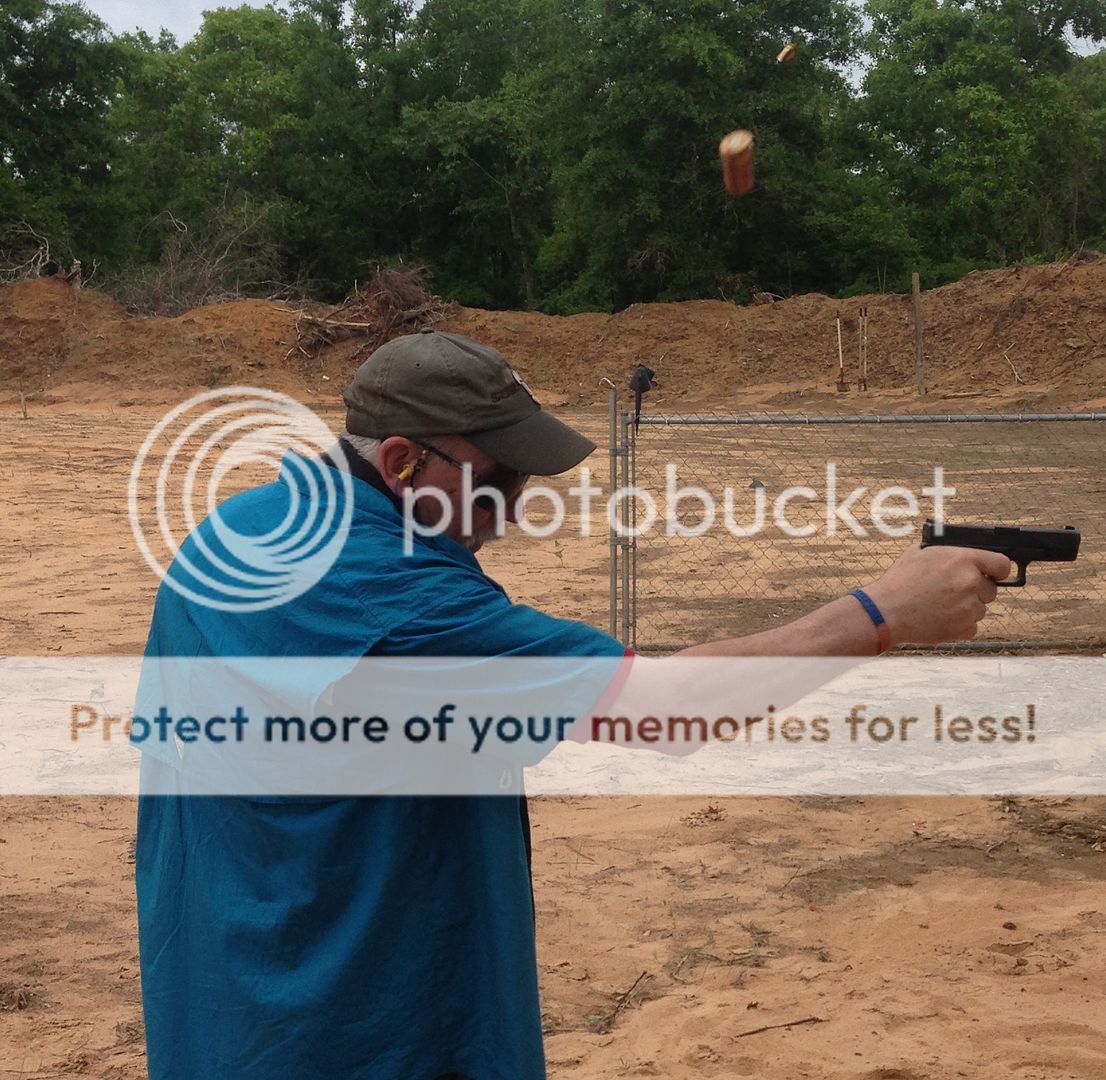The "double-tap" we all talk about it, many teach it, but what does it mean, and where did it come from. There is a common misconception that W.E. Fairbairn rigidly insisted on a two-shot string. As we shall see, this is false.
 THE SHANGHAI CONCEPT
THE SHANGHAI CONCEPTRight from the very first range drill, Fairbain introduced the concept of multiples.The trainee fired four indivudual shots then, to quote the lesson plan: "The last two shots should be fired as a "burst" ie in succession and as rapidly as the recruit can manage"
In the next session all shots are fired as two-shot bursts
In the third firing practice he introduced three-shot bursts.
"We have a preference for firing in "bursts" of two, or more, shots. We think that lack of stopping power inherent in the cartridge is compensated for in some degree by the added shock of two or more shots in very rapid succession." Just to emphasise, Fairbain repeatedly says "two or more shots" He regards the two-shot burst as a minimum, and encorages rapid multiple shots.
While Fairbairn viewed burst fire as "enhanced stopping power potential, Rex Applegate on the other hand, saw the DT as a means of ensuring at least one hit. "Enhanced hit potential" in other words.
 POST WAR
POST WARThe term "double-tap" became used in the British Army. The earliest I have a reference to it is from a program based on Grant-Taylor's methods.
I believe that it was the transfer of such training into the police, who were issued six shot revolvers, that made the double-tap into holy doctrine. With ammo limited to six shots, and with reloading being slow, it made sense to ration the ammo into three double taps.
Thriller writer Gavin Lyall summed it up neatly in "Blame the Dead", where his ex-military bodyguard hero gets into the climactic gunfight: "Maybe I was lucky at twenty yards; maybe I was getting good with that silly little. But I think it was the first shot that killed him. Still, you always fire twice."
THE COOPER DEFINITIONColonel Cooper disliked the term "double-tap" for two reasons. Firstlly the idea of delivering a "tap" to an assailant offended him. I prefer to think of the "tap" referring to the trigger, not the effects of the bullets.
Secondly, and more relevantly, the Colonel was a stickler for language precision, and regarded the term as ambiguous. To quote him: "This is a British term indicating two shots fired from the same weapon. It is clumsy and imprecise, since it includes both the controlled pair and the hammer; which are two different forms of delivery.
Whereas Fairbairn taught rapid "burst fire" without conscious reference to the sights, the Cooper approach was to teach two distinct forms of delivering multiple sighted shots.
The controlled pair, usually just called the "pair" can be broken down as sight picture/press....sight picture press. It can be used at any distance, and the shooter eventually learns a cadence that will keep his shots in the kill zone.
 [Controlled pair from 15 yards, under time pressure]
[Controlled pair from 15 yards, under time pressure]The "hammer", on the other hand is sight picture/press/press. Two shots are fired using that single initial sight picture. This technique is limited to closer ranges.
 [Hammer from 7 yards]IPSC
[Hammer from 7 yards]IPSCCombat Pistol shooting, the sport created by Colonel Cooper codified the two-shot concept. Every target had to have two shots to count as being "killed" If a target had only one shot, even dead centre in the kill-zone, the shooter was heavily penalised. On the other hand, he gained no more points from additional shots over the two. This has inculcated a mindset of firing only two rounds per target in thousands of very skilled shooters.
TRAININGThe double-tap is the minimum required to fire multiple shots. In training, for time/ammo economy we often have the guys draw and fire a DT, then repeat again and again. This instills the most important element, drawing and firing multiple shots, without using up too much ammo in long bursts.
Once this concept is instilled, I prefer to vary the round count, with double, triples, double plus head etc.
TRAINING versus REALITYWe cannot know in advance how many shots we are going to need to stop a particular attacker. We may need one shot, or, one magazine. Even during the engagement it may be difficult to tell if more shots are required. A single shot may do the job, be "non-survivable" but since targets don't vapourize we don't know that. He may be still up on his feet, mobile and an apparent threat. So you keep firing. Only an autopsy will reveal whether those additional shots were actually necessary, physiologically. They were certainly tactically necessary.
What we need are training targets that fall when hit by an unknown number of rounds. Sometimes the target should drop rapidly, sometimes gradually. Sometimes a single hit will suffice, sometimes it should require several. The shooter should not know in advance what it will take. Unfortunately, as far as I know such targets are beyond current technology.
I'm a big fan of steel "Pepper Poppers" but they will always react in the same way to a hit by a particular round. It is possible to vary the angle of the popper, so that it takes more energy to drop it, but this isn't the complete answer.
Some sort of ratchet which can be set by the range staff to drop the steel after one, two, or, three shots could be a solution. Then a bank of three poppers could be set to present different shooting problems.
 STATE OF THE ART
STATE OF THE ARTThe current thinking is to "shoot until the assailant drops from your sight picture" This may take one shot, or many.
There are tactics to reinforce and enhance this, such as the "Mozambique Drill" and the "Zipper"
Fairbairn, thought by many to have been the advocate of the double-tap, taught this approach back in his Shanghai days. He said " this belief of ours implies the necessity for a large volume of fire, quite apart from the desirability on other grounds, of having as many rounds as possible at one's disposal without having to reload." His final comment: "tjhe more closely our own pistols resemble machine guns, the better we like it"
